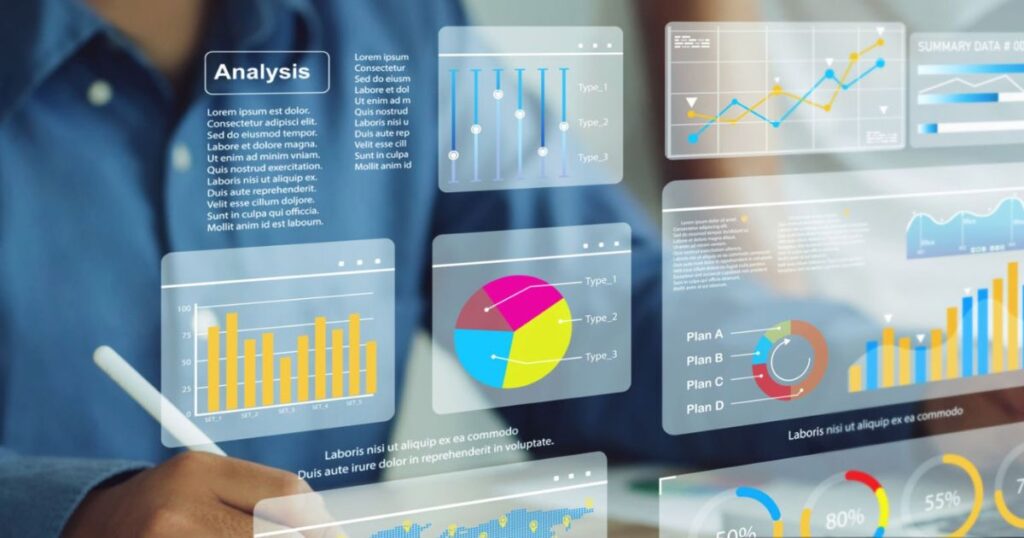Excel has been around for a while now and has been a big help to many businesses over the years. But the lingering question is resurfacing, will AI replace Excel?
Even though it’s pretty handy, there’s still a bit of a love-hate thing going on between Excel and its users. Back in 2016, some Excel functions like GETPIVOTDATA or VLOOKUP were either hailed as heroes or seen as evil because of their complexity. But once folks realized just how powerful Excel can be, they wanted to learn more and ended up loving it.
The roots of the spreadsheet model go way back to the 1960s, thanks to groundbreaking software like LANPAR and VisiCalc. When VisiCalc hit the scene in 1979 on Apple II computers, it changed how we see spreadsheets. Then, in 1985, Microsoft jumped in with Excel, first for Mac and then for Windows, quickly becoming everyone’s go-to for spreadsheets. By the ’90s, Excel had outshined its rivals, solidifying its place as the top choice for tasks from accounting to data analysis across different industries.
Fast forward to today, with Excel 365 out there, it’s still the king of the spreadsheet world. But here’s the catch, Artificial Intelligence (AI) is now dominating the market!
Companies like OpenAI with ChatGPTs Robo CFO Team are shaking things up, posing a threat to good ol’ Excel. And guess what? A bunch of finance companies are jumping on the AI bandwagon too – think DataRobot, Zest AI, Enova, and more!
What is AI in Finance?
Time is finance money, but the risk can really throw a spanner in the works if not handled right. Accurate forecasts are like gold – they keep businesses moving fast and safe.
AI is transforming finance by leveraging technology, such as sophisticated algorithms and machine learning (ML), to enhance data analysis, streamline tasks, and refine decision-making processes. It encapsulates a suite of technological advancements, especially in machine learning, to boost financial service operations.
These technologies allow financial institutions to increase the precision, efficiency, and speed of operations. AI is at the forefront of refreshing the financial industry, automating once manual tasks, offering a richer comprehension of market dynamics, and enriching customer engagement with interactions that simulate human cognition and communication. It’s spearheading a transformative shift in financial institutions and startups alike.
AI-driven models process transactions with unmatched velocity and accuracy, leveraging live market data for deeper insights and informed investment decisions. Through meticulous analysis of complex data patterns, AI empowers financial organizations to fortify risk management frameworks, encompassing security measures and compliance procedures such as fraud prevention, anti-money laundering (AML), customer identification (KYC), and more.
AI Application in Finance
Here are a few areas where AI is often used in the finance industry:
- Algorithmic Trading – Enhances trading strategies using market trend analysis for quicker and more efficient trade execution.
- Automation and Efficiency – Streamlines repetitive tasks, improving data processing speed and accuracy.
- Credit Scoring – Utilizes diverse data, including online activity, for more accurate credit assessments.
- Cost Reduction – Reduces manual labor through automation, improving operational efficiency and cutting costs.
- Customer Service – Offers 24/7 assistance through AI-powered chatbots and personal assistants, enhancing fraud protection and customer interaction.
- Data Analysis – Processes vast data sets to uncover insights and trends, supporting informed decision-making.
- Fraud Detection – Identifies suspicious patterns to prevent financial crimes, bolstering online transaction security.
- Loan Processing – Streamlines risk assessment and document verification, speeding up loan approvals.
- Personal Finances – Helps in managing personal budgets and savings strategies through detailed analysis of user data.
- Portfolio Management – Assists in investment decision-making by analyzing market conditions and economic indicators.
- Predictive Analytics – Employs modeling to forecast market trends, risks, and customer behaviors.
- Risk Management: Enhances risk assessment capabilities, promoting a more secure financial landscape.
Why Excel is Still Thriving in the AI Era?
With all these AI programs and capabilities churning out financial models and analytics, why does Excel still manage to thrive in the AI era?
Despite the rapid advancements in AI, Excel remains an indispensable tool in the business world for a multitude of reasons.
Its ability to model complex data, automate workflows, and visualize information through charts, pivot tables, and dashboards allows users to tailor the software to a vast array of tasks ranging from budgeting to inventory management. This versatility ensures its applicability across diverse roles and industries. Excel’s ubiquity, facilitated by its presence on multiple operating systems including Windows, macOS, and even Linux-based platforms, and available in web, desktop, and mobile variations, offers unparalleled accessibility.
This is especially relevant in contrast to AI tools, which may require the latest hardware or high-speed internet. The software’s integration with the Microsoft Office suite and its decades of development incorporating features like advanced linear regression functions and Power Query for data modeling further underscore its value. Additionally, Excel’s cost-effectiveness, coupled with the ability to share files organization-wide, reduces redundancy and maintains its competitive edge.
Excel Supercharged Capabilities with AI
Even as AI continues to evolve, the ability to utilize Excel more effectively in tandem with AI technologies underscores Excel’s enduring relevance and utility.
Instead of replacing Excel, AI can actually enhance its capabilities in quite a few impactful ways!
Automation
AI programming tools automate the process of loading, cleaning, parsing, and analyzing data in Excel, increasing efficiency with large datasets.
Natural Language Integration
Integrating AI chatbots into Microsoft 365 or other companies’ practices of using chatbots to interpret Excel data for understanding and generating responses.
Refined Data Display
AI-driven visualization add-ons automatically create charts and graphs from spreadsheet data, making it easier to understand complex data relationships.
Smart Formula Generation
Auto-write formulas based on inputs, simplifying formula creation without the need for memorizing syntax.
Voice Features and Control
Use of voice commands for common tasks such as navigating sheets, selecting cells, and inserting formulas, enhancing accessibility.
Refining Excel Skills in an AI-Dominated World
Throughout history, technological advancements have consistently reshaped the workforce and the economy, influencing job markets in various ways.
Highlighting this evolution in a comprehensive analysis, Morgan Stanley drew parallels between the advent of AI and previous waves of technological progress, suggesting a hopeful outlook. For instance, consider the development of spreadsheets in the late 1970s, which became more prevalent with Microsoft Excel’s launch in the late 1980s. Morgan Stanley’s research indicated that, while the rapid spread of this technology throughout the ’80s—particularly after Excel was introduced in 1987—led to a decrease in jobs for bookkeepers and accounting clerks (from around 2 million in 1987 to just over 1.5 million by 2000), it simultaneously spurred growth in positions for accountants, auditors, management analysts, and financial managers (with numbers increasing from about 0.6 million in 1987 to around 1.5 million in 2000).
Essentially, the reduction in certain job types was counterbalanced by the creation of new, related roles. A comparable situation occurred with the launch of ATMs, which contrary to expectations that they would reduce the need for bank tellers, actually facilitated an expansion in bank branches and, consequently, an uptick in teller positions.
Previous cycles of technological innovation, despite fears of significant job losses, have generally led to the opposite outcome: enhanced productivity, lower costs, and the introduction of new products and services. Nonetheless, it’s critical to acknowledge that the net growth in employment offers little solace to individuals who may lose their current positions and find it difficult to access emerging roles. This underscores the importance, as Morgan Stanley points out, of supporting those affected by technological shifts through new skill development efforts, emphasizing that the challenges presented by ‘GenAI’ labor disruptions may necessitate intensified efforts in reskilling through robust private-public partnerships.
So, who really needs Excel skills these days with AI around?
Well, even though AI can help speed things up, a hefty number of roles are in demand to refine their Excel know-how:
- Financial Analysts
- Business Analysts
- Accounting Professionals
- Project Managers
- Marketing Analysts
- Schools and Universities
- Small Businesses (SMBs)
Final Thoughts
Excel remains a go-to tool for improving data handling across different fields. Getting good at Excel is handy for your projects and team efforts, helping you understand data better. It’s still relevant because it’s flexible, easy to use, familiar, and great at merging data – a real must-have in today’s tech world. Instead of being replaced by AI, Excel is gearing up to get even better with AI automating boring tasks and boosting data analysis. Knowing Excel gives you a versatile skill set suitable for personal use, startups, and big companies. Mastering spreadsheets means you can ride the wave of AI advancements, benefiting everyone from pros to beginners. Excel’s not going anywhere – it’s got a bright future ahead!





